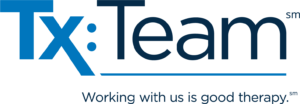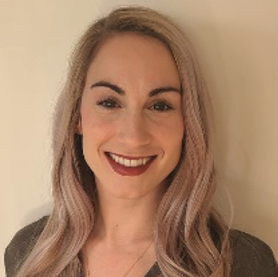Since 1983, Tx:Team has focused on providing our partners and our patients the best in quality services.
“We believe that everyone should have the opportunity to live the healthiest life possible. By harnessing the collective power of our therapists’ hands and minds to heal, we create an environment of health, wellness, and vitality for our patients, our associates, our partners, and our communities.”
It is easy to assume or make statements that we give great care. Without the data, how do we know? Tx:Team takes great pride in the fact that our therapists deliver the highest in quality rehabilitation services. So, how do we know? We can prove it.
Tx:Team uses numerous systems to measure patient satisfaction and patient outcomes. These systems include Focus on Therapeutic Outcomes (FOTO), CMS Merit-based Incentive Payment System (MIPS), patient satisfaction scores, goal attainment, and net promoter scores. The information we collect helps us to measure how we are doing and if necessary, where we can make improvements.
Why do we do this? We want to be sure we are continually providing the best clinical services with the highest form of customer service.
FOTO – Focus On Therapeutic Outcomes is an outcomes tracking platform used by our Employer Based Clinics, Frederick Health outpatient clinics, and our team at Putnam County Hospital. Similar to standardized outcome measures like the DASH and the Oswestry, FOTO looks at the change in score on surveys completed by patients throughout the episode of care. FOTO is unique in that they use their database of over 7 million episodes to provide a risk adjusted comparison of outcomes. Our results are compared to the average change and number of visits of patients who are similar based on 13 risk adjustment criteria. FOTO also collects patient satisfaction and net promoter scores as well as any comments patients want to submit. Results are ranked by clinic and therapist against all other 23,500 therapists using their platform.
MIPS – Merit-based Incentive Payment System. A “gift” from CMS, MIPS measures functional outcomes. The patient is given a survey to measure what their current function is and then fills out the same survey when progress reports are due and at discharge. Our final score is based on the percentage of cases that fail to progress above the minimum threshold for each measure. MIPS also measures change in pain from start to finish with an expected 2 point decrease. In place of automatic increases to the MPFS for all providers, CMS implemented MIPS as the only way providers can receive an increase. However, participation doesn’t guarantee a positive adjustment. MIPS is a budget neutral system which means providers who produce better outcomes are awarded positive fee schedule adjustments funded by the negative adjustments assigned to weaker performers.
Patient Satisfaction – These scores measure several different things and most importantly give us a measure of overall satisfaction. How satisfied a patient was with their therapist by asking if they would recommend them to another person? Are we courteous, responsive? Do we respect patient privacy? Are our associates professional? Is there a limited amount of waiting time for patient appointments? Surveys also provide an opportunity for the patient to leave comments about their therapy visit.
Goal Attainment – We have been addressing goals since the day we saw our first patient. These goals are a key in measuring and attaining patient satisfaction. Our goals must be patient centered, involve their input and celebrated when they are achieved. The patient must be aware of how they are performing in relation to the goals and educated when the goals are in “Therapy Speak” as to how they relate to making the patient’s life better. A best practice is to use the MIPS and FOTO tools to write functional goals where the patient may be having difficulty.
Net Promoter Score – These scores are all very important and deserve a pat on the back, but they are also helpful in exposing where we may have some room for improvement. Digging deeper, into scores by individual therapist can help us learn from each other and develop company-wide “best practices.”
The big question is…how do we stack up? The answer? Very well!
- Tx:Team has received the award of “Exceptional Performer” by the Center of Medicare Services (CMS) for the past 3 years (2020, 2021, 2022). The most recent score of 100 in 2022 places us in the top 1 percent of Outpatient Physical Therapy clinics in the country.
- In 2022, our Patient satisfaction scores have been recorded as a consistent 98% – 99% throughout the year.
- “Would you recommend your therapist to others?” 100% of our patients said they would definitely recommend.
- Awards – One of our employer-based clinics, IU13 Clinic in Pennsylvania has earned the top level of recognition within FOTO (Focus on Therapeutic Outcomes). This is an impressive accomplishment since this award requires meeting 12 months of consistent outcomes performance benchmarks. The award is called The Center of Excellence Award.
Patient outcomes and patient satisfaction. There is a correlation!
It has been said that a happy patient has better outcomes, participates in his or her therapy sessions, and has fewer cancellations. Happy patients can actually get better faster. The goal of all associates at Tx:Team is to provide the best clinical therapy services and delivering those services with the highest form of customer service. See why “working with us is good therapy.”

 ACL injuries are becoming more and more common in the young athlete, but did you know that female athletes are up to 10 times more likely to experience an ACL injury compared to men? This may be due to the anatomy and biomechanics of the female knee joint. Often due to wider hips and a smaller groove at the bottom of the femur where the ACL inserts, the ACL in the female knee may experience greater stress and further restriction during twisting, jumping, changing direction, and landing movements compared to men. Other contributors to increased risk of injury include weakness of the posterior chain musculature (glutes and hamstrings) and ligament laxity during hormone cycles. Recent studies have found that woman may be more susceptible to ACL injury just prior to ovulation compared to the follicular phase due to increased ligament laxity.
ACL injuries are becoming more and more common in the young athlete, but did you know that female athletes are up to 10 times more likely to experience an ACL injury compared to men? This may be due to the anatomy and biomechanics of the female knee joint. Often due to wider hips and a smaller groove at the bottom of the femur where the ACL inserts, the ACL in the female knee may experience greater stress and further restriction during twisting, jumping, changing direction, and landing movements compared to men. Other contributors to increased risk of injury include weakness of the posterior chain musculature (glutes and hamstrings) and ligament laxity during hormone cycles. Recent studies have found that woman may be more susceptible to ACL injury just prior to ovulation compared to the follicular phase due to increased ligament laxity.